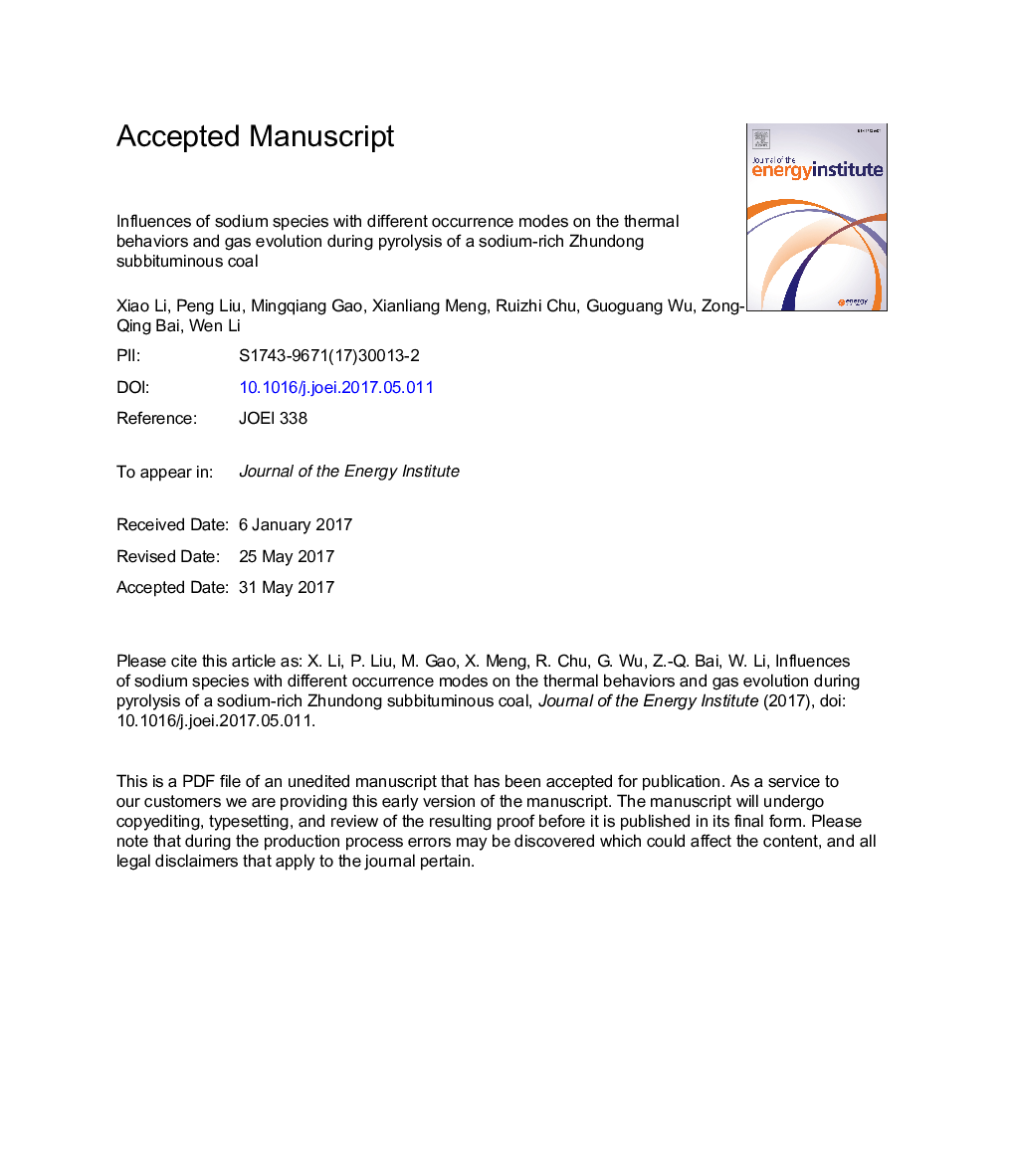| Article ID | Journal | Published Year | Pages | File Type |
|---|---|---|---|---|
| 8955758 | Journal of the Energy Institute | 2018 | 25 Pages |
Abstract
The Zhundong coal (ZDC) with a huge proven reserve is featured by high abundance of sodium species which behaves actively in the thermal conversion of it. In this work, to better understand the multiple roles of sodium species in coal pyrolysis, influences of sodium species with different occurrence modes on the thermal behaviors and gas evolution during pyrolysis of a sodium-rich ZDC were investigated. Raw coal was initially demineralized by dilute hydrochloric acid. Subsequently, sodium species was reloaded into the demineralized sample by ion-exchanged or immersed method. For quantitative analyses, a thermo-gravimetric analyzer coupled with a mass spectrometer was used to record the weight loss of different samples and the ever-changing amount of gaseous products in pyrolysis. The results show that the structural change induced by demineralized and ion-exchanged treatment is mainly reflected in the band intensity of carboxyl groups. In pyrolysis of ZDC, total volatile matters yield has a close relation with the occurrence modes of sodium species. It is proved that water-soluble sodium species has catalytic effects on the thermal-cracking reactions, whereas exchangeable sodium species tends to facilitate char-formed reactions. Compared with exchangeable ones, water-soluble sodium species can be also volatilized more easily in pyrolysis. As for gas evolution, exchangeable sodium species can obviously affect formation of CO through char gasification and it is also favorable to formation of hydrogen radicals. Moreover, due to the low sulfur content in ZDC, the intensity of H2S released from all samples is extremely weak, which suggests that ZDC is a suitable feedstock for clean coal utilization.
Related Topics
Physical Sciences and Engineering
Energy
Energy Engineering and Power Technology
Authors
Xiao Li, Peng Liu, Mingqiang Gao, Xianliang Meng, Ruizhi Chu, Guoguang Wu, Zong-Qing Bai, Wen Li,
